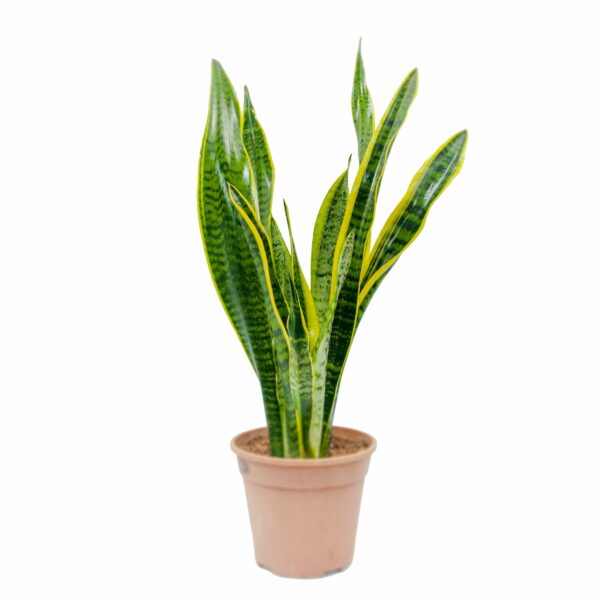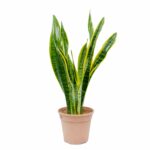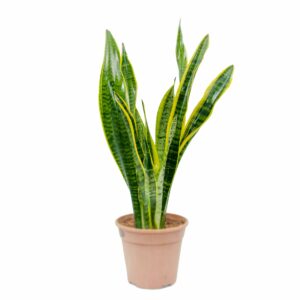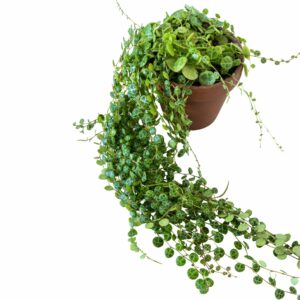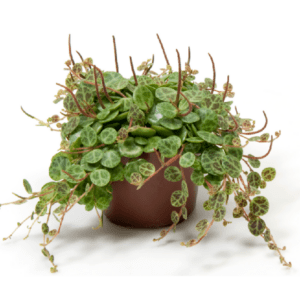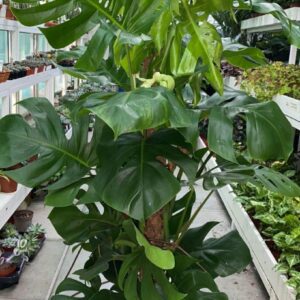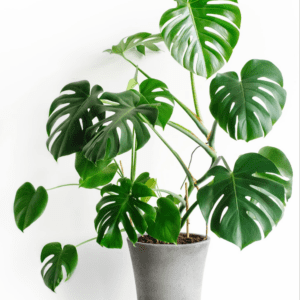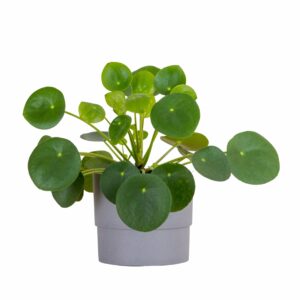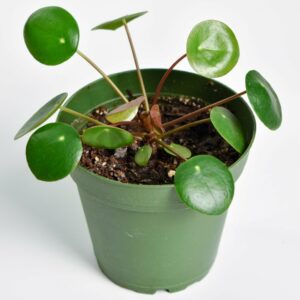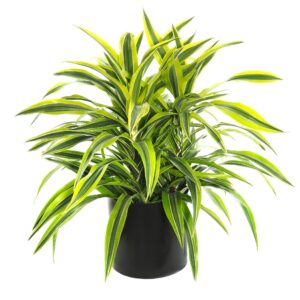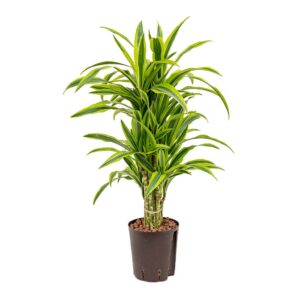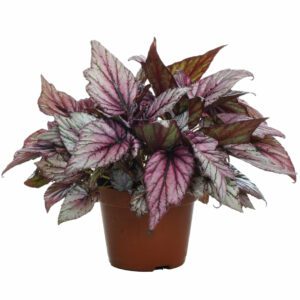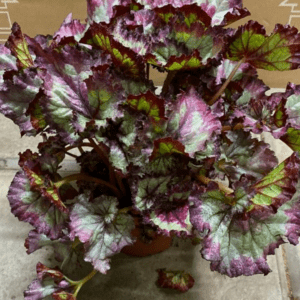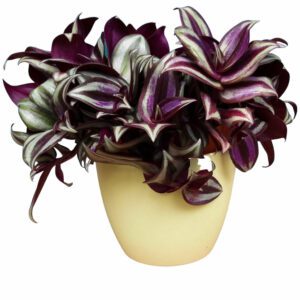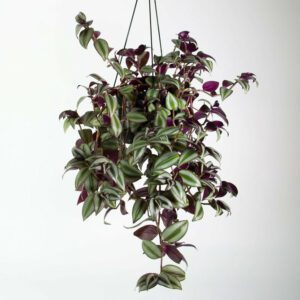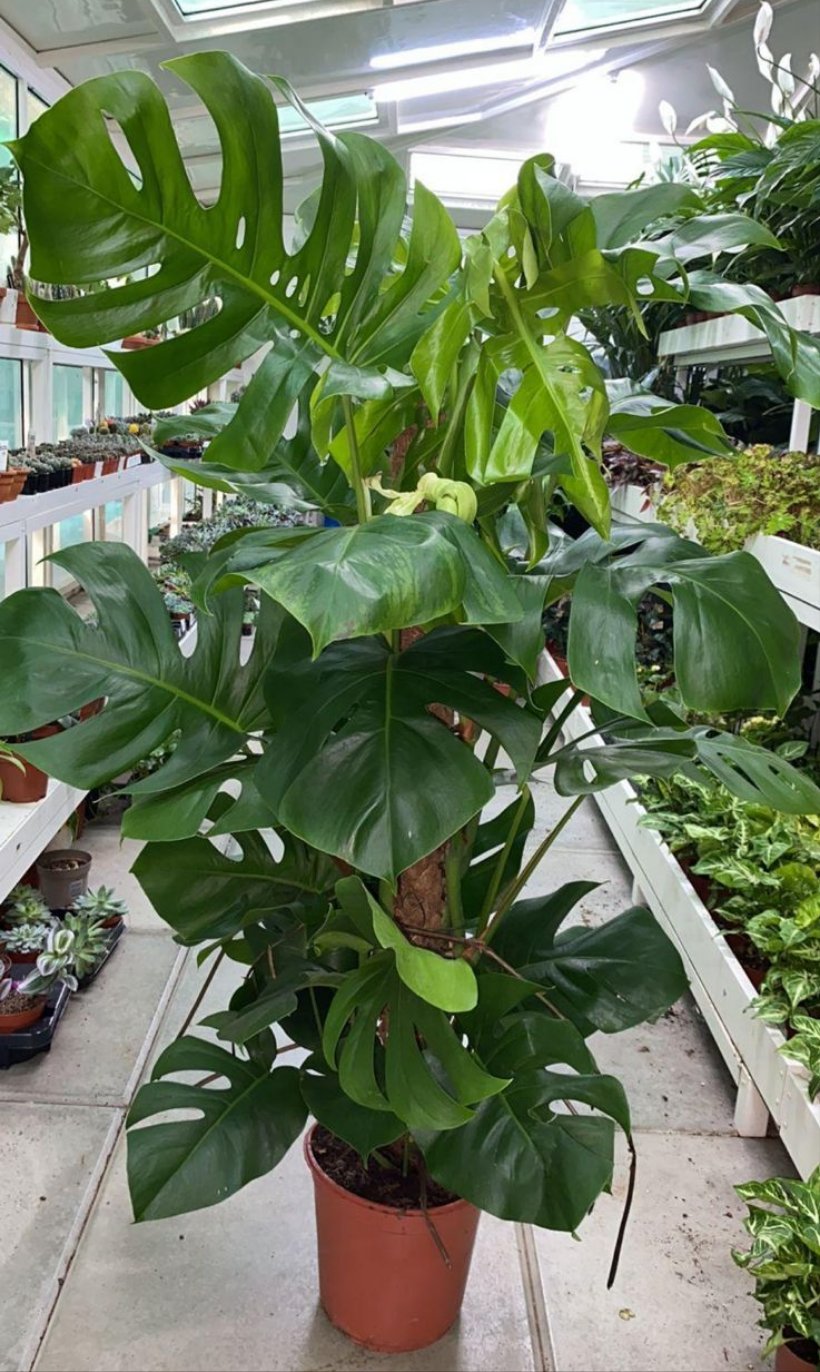Description
Sansevieria trifasciata, commonly known as the snake plant, is one of the most popular and hardy species of houseplants. The snake plant goes by another common name, mother-in-law’s tongue, an offensive comparison between its sharp leaf shape and a woman’s sharp tongue. Snake plants vary in color but usually have green banded leaves and commonly feature a yellow border. Adapted to arid environments, the Sansevieria developed CAM photosynthesis, allowing it to open its stoma at night and close it during the day to reduce loss of water. They are known for removing toxins and purifying the air. Snake plants may even improve your health and well-being. They were first cultivated and kept as treasured houseplants in China because it was believed the eight gods bestowed their virtues (long life, prosperity, intelligence, beauty, art, poetry, health, and strength) upon those who grew the plant. According to joint studies run by the University of Georgia and Yonsei University, snake plant has a demonstrated ability to remove formaldehyde and benzene from the air. Sansevieria are perfect for beginner plant parents, but are all around popular house plants for multiple reasons. The variety of specimens available makes it fun to mix and match, and as they all have similar care requirements it makes them an effortless bunch. While they do best in bright filtered light, they are adaptable and tolerate partial shade and low light conditions as well as fluorescent lighting, making them ideal for most rooms in a home and office settings.
Plant Care
- Although they are very forgiving, snake plants prefer indirect but steady light with some direct sun.
- Let the soil dry between watering. During winter, reduce watering to monthly, or whenever the soil is dry to the touch.
- Sansevieria plants prefer a loose, well-drained potting mix. This plant will do well in sandier soils.
- Similar to humans, plants prefer temperatures of 65? to 85? although some plants like the Sansevieria are native to arid climates and can tolerate much warmer weather.
- A very light feeder, apply a balanced houseplant fertilizer at half strength once every 1 – 3 months.
Additional Information
| Size | 40cm – 50cm, 60cm – 70cm |
|---|
Disclaimer
The image displayed is for reference only. The actual product may differ in shape, appearance, climate, age, height, and other factors. Plants will be delivered in plastic pots unless the customer explicitly selects a different pot option.
All information provided is shared in good faith. However, we make no representations or warranties of any kind, express or implied, regarding the accuracy, adequacy, validity, reliability, availability, or completeness of the information on this site.

